The forearm anatomy consists of so many individual small muscles that one of them is bound to get injured during training sooner or later.
And while the EZ bar wrist curl won’t protect against bad form, it will put the wrists in a more natural position, which goes a long way towards stopping them from getting sprained.
Related guides
EZ bar wrist curl exercise details
- Main Muscles: Forearm flexors, forearm extensors
- Exercise Type: Strength
- Exercise Mechanics: Isolation
- Difficulty Level: Beginner
- Equipment Needed: EZ bar, bench
How to do EZ bar wrist curls properly

- Load up an EZ bar with a moderate amount of weight.
- Grab the bar with a close grip, and then place the top of your forearms on a bench.
- Let your hands, which should be holding the bar firmly, hang off the edge of the bench.
- Lower the weight towards the floor by bending your wrists.
- Descend until you feel a deep (yet comfortable) forearm stretch.
- Come back up by flexing your wrists.
- Hold the contraction for a split second and then repeat for 2-4 sets of 10-15 reps.
EZ bar wrist curl training tips
Get the most out of the EZ bar forearm curl with these highly specific training tips.
Train your extensors too
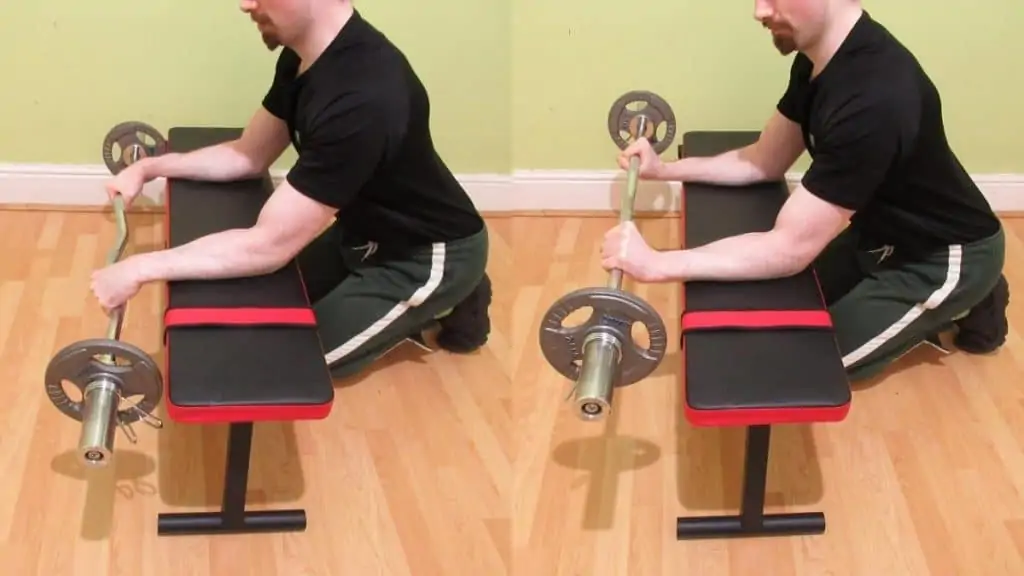
Since the flexors contribute the most mass to the forearm, the extensors often get overlooked by the majority of lifters. Heck, some people don’t train them at all.
And that’s a big mistake.
Not only will this habit leave you with a severe muscular weakness, but it’ll make your lower arms look incredibly disproportionate.
Thankfully, the solution is rather simple. After you’ve done the standard EZ bar wrist curl, change your grip from underhand to overhand and then do the motion in reverse (see reverse forearm curls).
So, form wise, you’re still lowering the bar down towards the floor, but on the way up, you’re going to be using your extensors to lift the weight. Just be sure to start with the empty bar. The extensors are slow twitch and are naturally a lot weaker than the flexors, so they can’t handle the same amount of resistance.
Ditch the straight bar
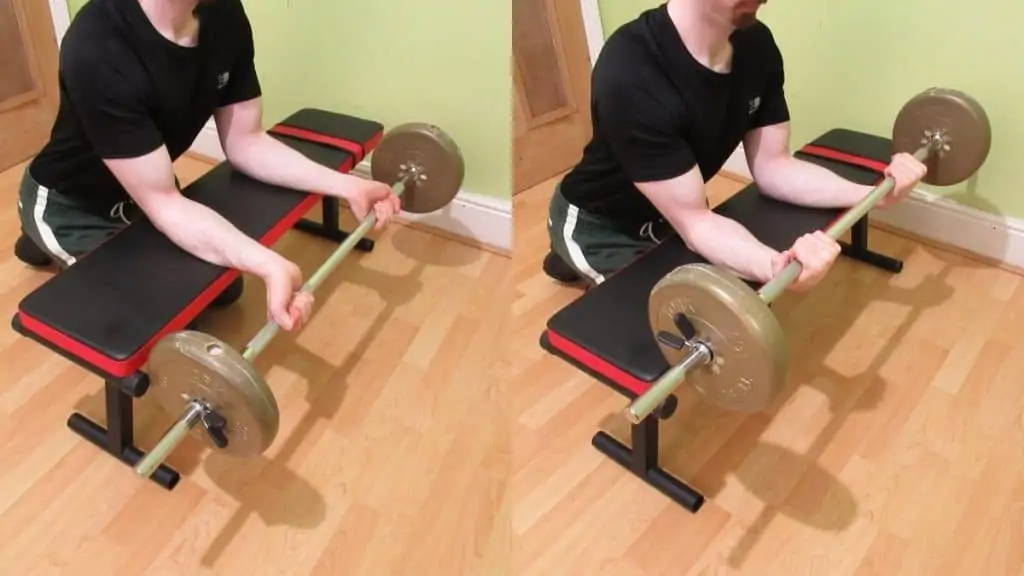
Exercises such as the reverse barbell wrist curl or the standing barbell wrist curl certainly have their place. And do you know what? They’re fantastic for the forearms.
Yet, for many people, these movements, such as the barbell forearm curl, can cause debilitating wrist pain.
That’s why I love the EZ bar forearm curl. It provides the same amount of muscle stimulation without placing your wrists in an unnatural position. How is the barbell version unnatural?
Well, to do the barbell version, your hands are either completely pronated or completely supinated, which isn’t how our arms and hands naturally hang. But with the EZ version, your hands are in a more neutral position, which eases the tension on your wrist joints.
Never shortcut the stretch
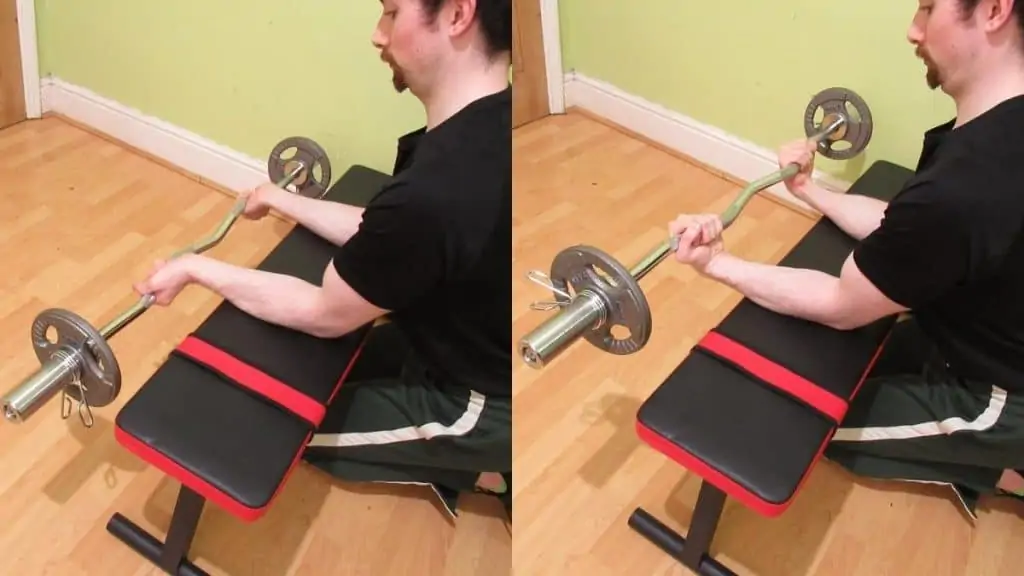
Bodybuilders love getting a strong contraction because it gives them a good pump. However, as far as actual muscle growth goes, eccentric contractions are more important than concentric contractions.
So, if you want maximum gains from your forearm curls, don’t forget to lower the bar as far you comfortably can.
Also, keep in mind that there’s a fine line between deep stretching and straight up overstretching. This is why I recommend performing several warm-up sets with the empty bar—so that you can gauge the ideal range of motion.
Always squeeze the muscle

Even though I just said that eccentric contractions are probably the most important, it’s still crucial to purposefully squeeze your muscles to get the most bang for your buck from each rep. [1]
Plus, squeezing the muscle hard produces a great pump. Anecdotally, this can improve vascularity because it shuttles plenty of blood into the muscle, which makes your veins expand.
EZ bar wrist curl alternatives
Check out these exercises and pair them up to construct your own workout.
Behind the back wrist curls

I like behind the back wrist curls because they produce an incredibly intense forearm pump. My hypothesis for this is that because you can’t see the working muscles, you have to put greater effort in to make them stretch and contract.
Or, in bodybuilder-friendly language, it forces you to use a better mind-muscle connection.
Do them with cables (see cable wrist curls) for constant tension, less wrist strain, and an even better pump. Plus, with cables, you don’t have to load weight discs onto a bar. You just put the pin in the slot and then lift. It’s that simple.
Palms down wrist curl
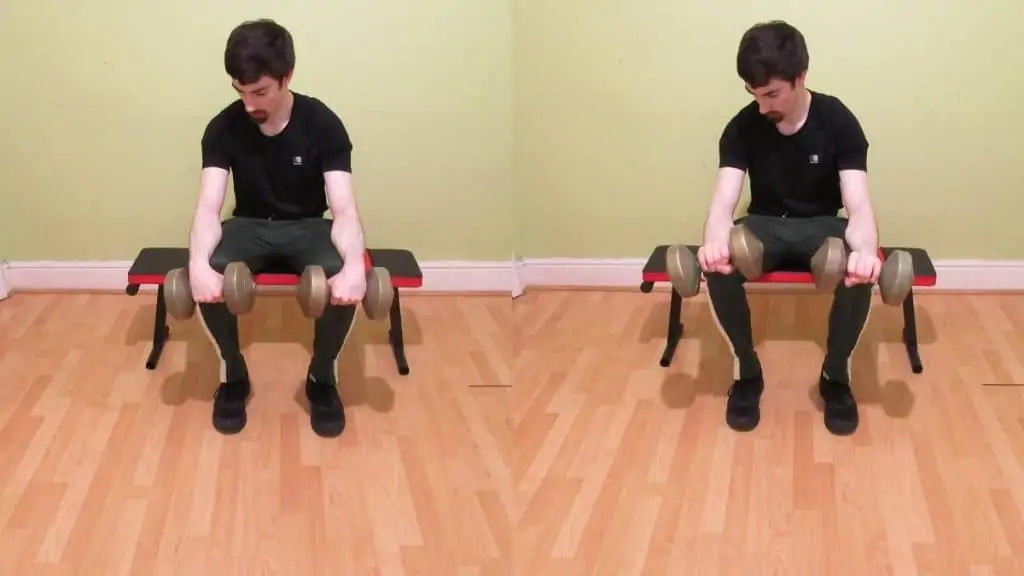
The palm down wrist curl works the forearm extensors and is typically performed over a bench so that you can focus 100% of your effort on the working muscles. However, you can also do the standing reverse forearm curl if there are no benches available.
The premise is the same. You use high reps (20-30) because the range of motion is very small. So to get enough time under tension, you either need to do loads of sets of low to moderate reps or just stick to high rep training. But because the extensors are slow twitch, I always stick to high reps for the best results.
Single dumbbell forearm curl
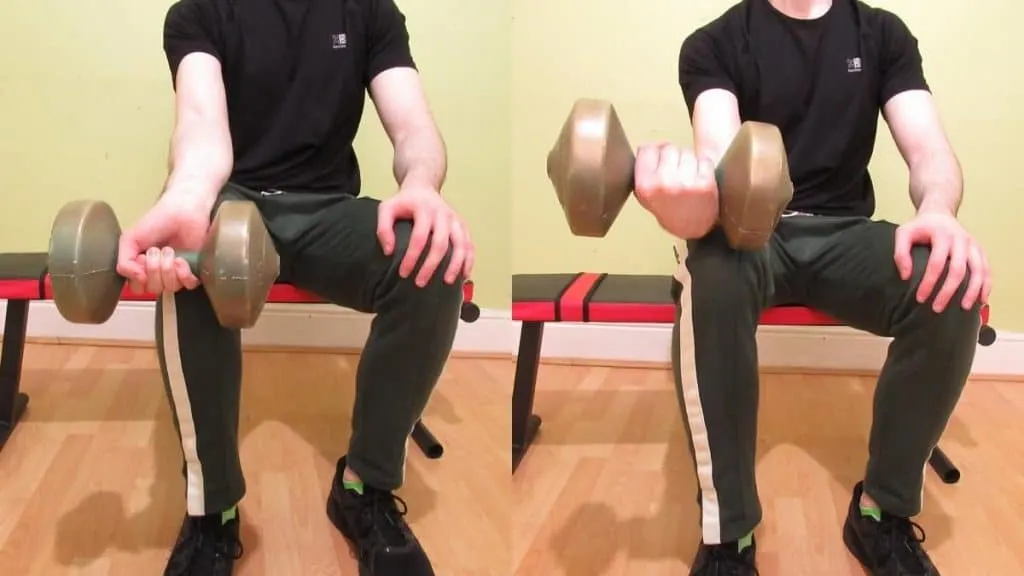
The only thing worse than lagging forearms are forearms that have visible muscular imbalances. Yet another downside of the barbell version. The good news is that the single dumbbell forearm curl can help.
Training one arm at a time ensures that you can give each side the same attention while also improving your mind-muscle connection. Yes, it takes longer, but there’s nothing like working one muscle at a time when it comes to hypertrophy training.
Full workout routines
What’s the verdict on EZ bar forearm curls?

The EZ bar wrist curl is a top-notch exercise because it tackles a common problem associated with forearm training: wrist discomfort.
While it’s not a cure for poor form or fragile wrists, the EZ bar forearm curl will keep your wrists in a more natural position, which can protect against injuries. [2] This is great for us because when our joints are feeling good, we can naturally lift heavier weights and build muscle faster.
References
- Franchi, M. V., Reeves, N. D., & Narici, M. V. (2017). Skeletal Muscle Remodeling in Response to Eccentric vs. Concentric Loading: Morphological, Molecular, and Metabolic Adaptations. Frontiers in Physiology, 8. https://doi.org/10.3389/fphys.2017.00447
- Lavallee, M. E., & Balam, T. (2010). An Overview of Strength Training Injuries. Current Sports Medicine Reports, 9(5), 307–313. https://doi.org/10.1249/jsr.0b013e3181f3ed6d

